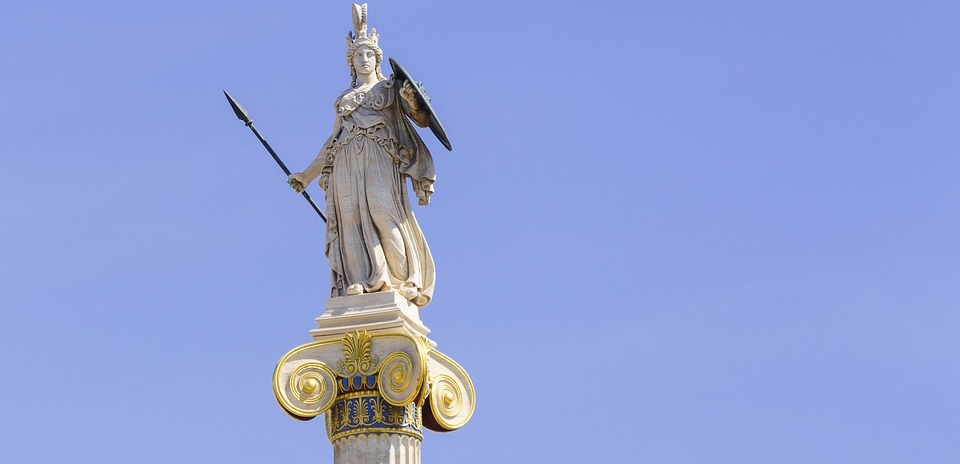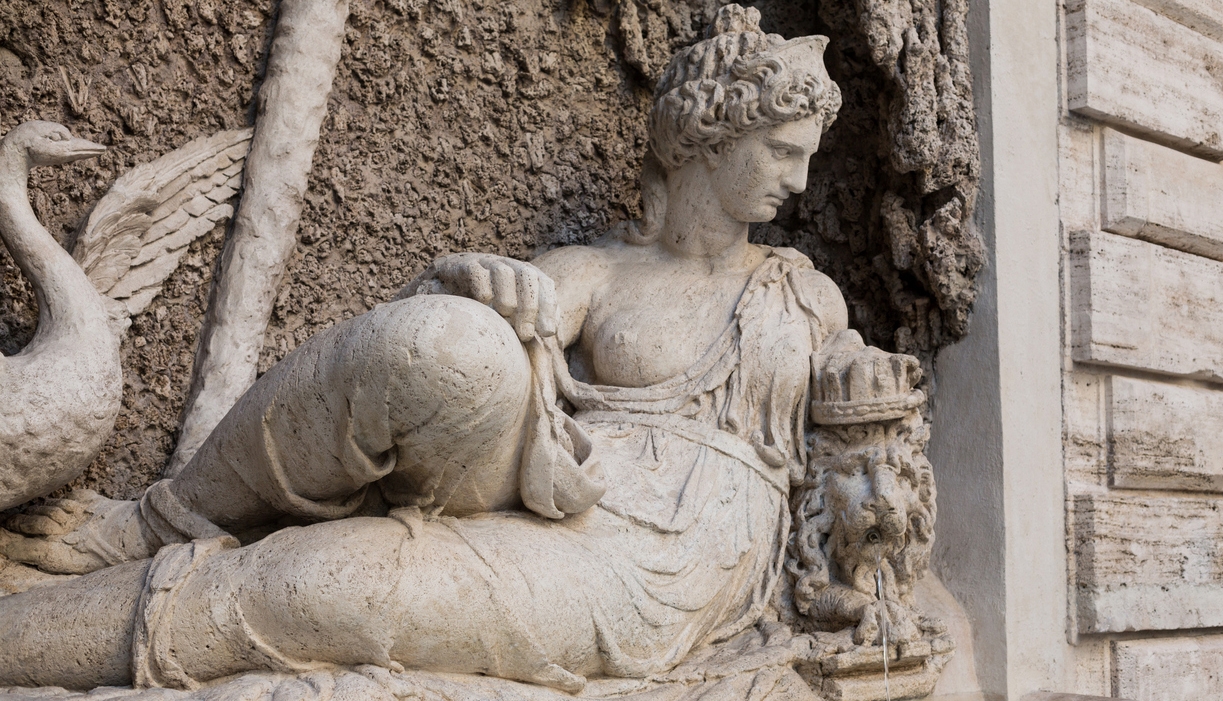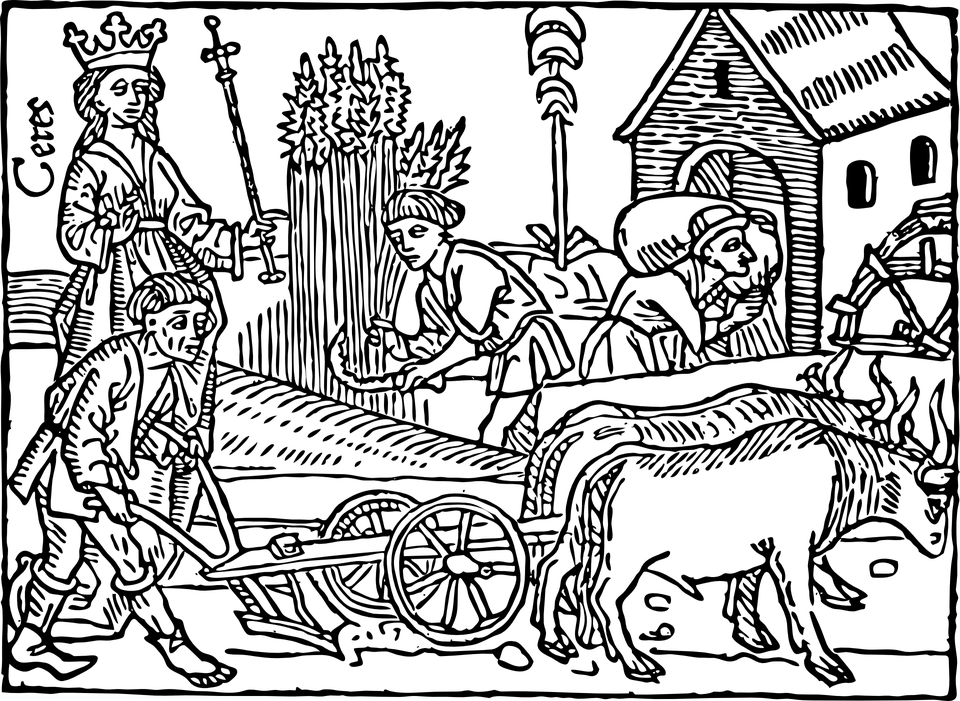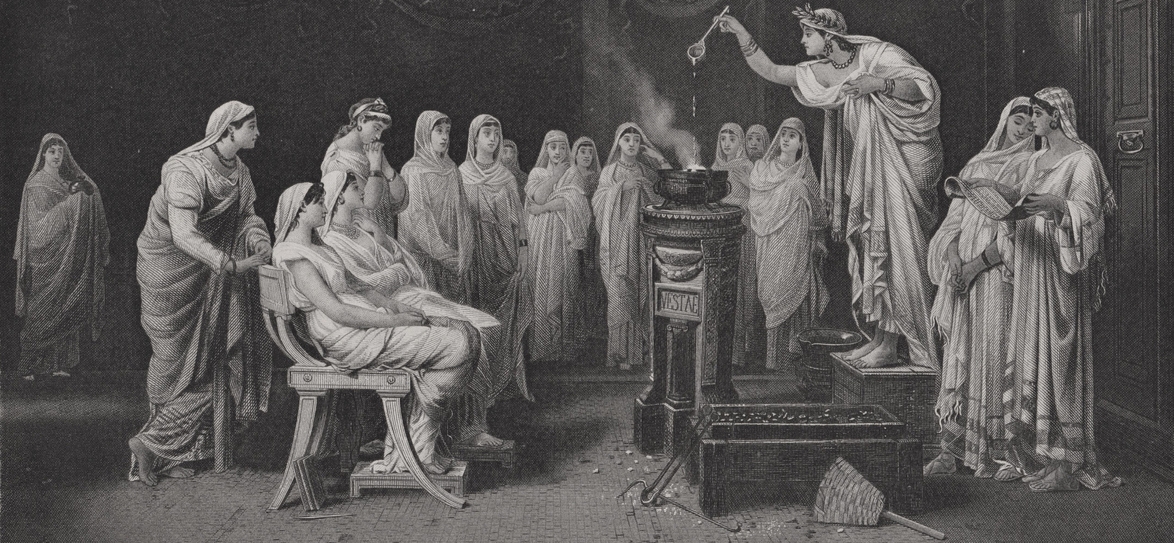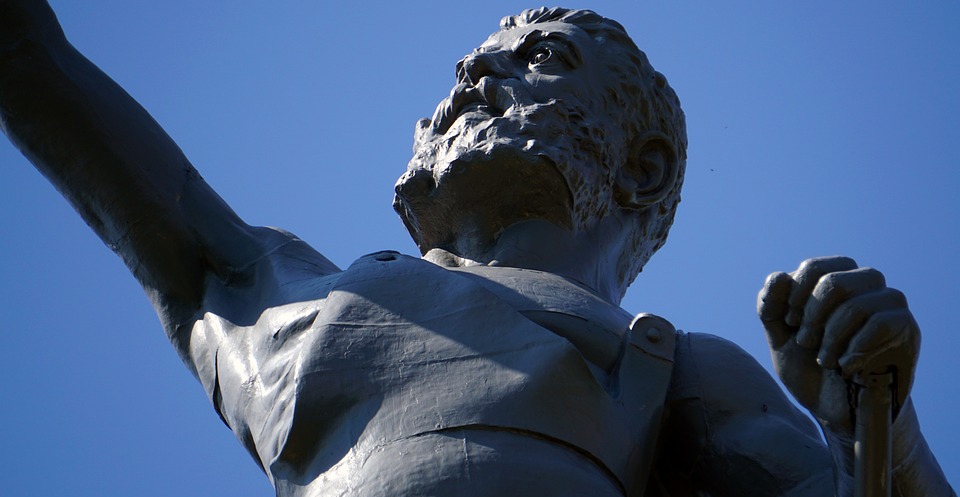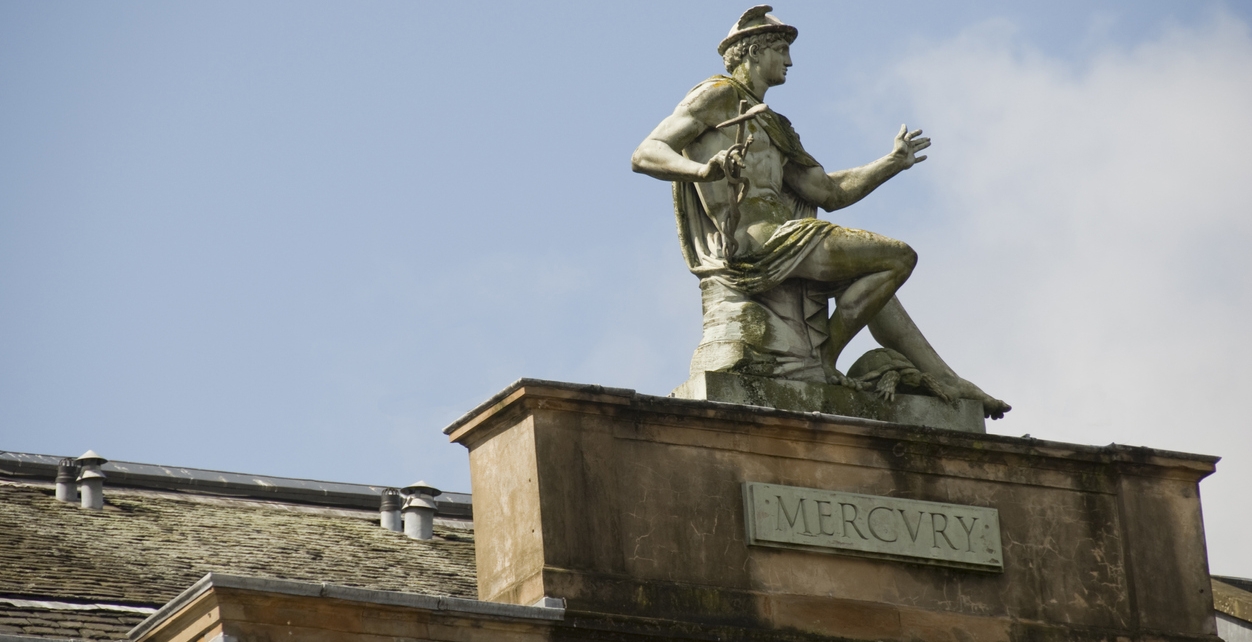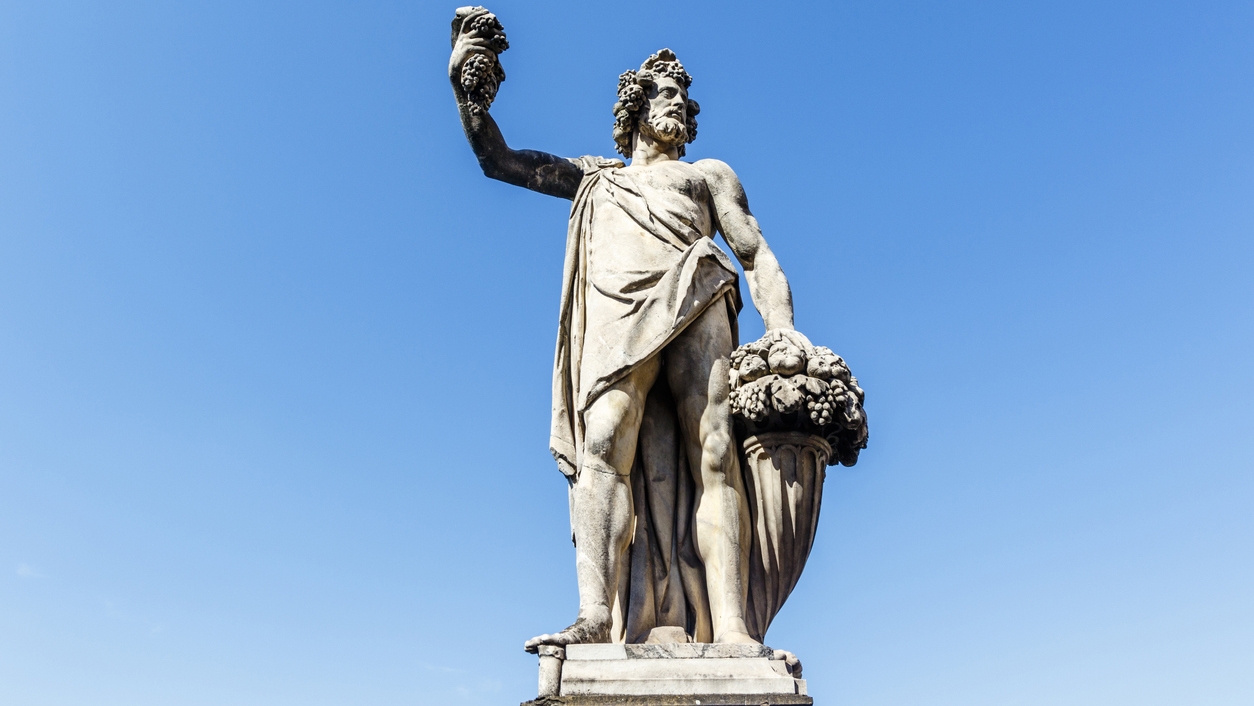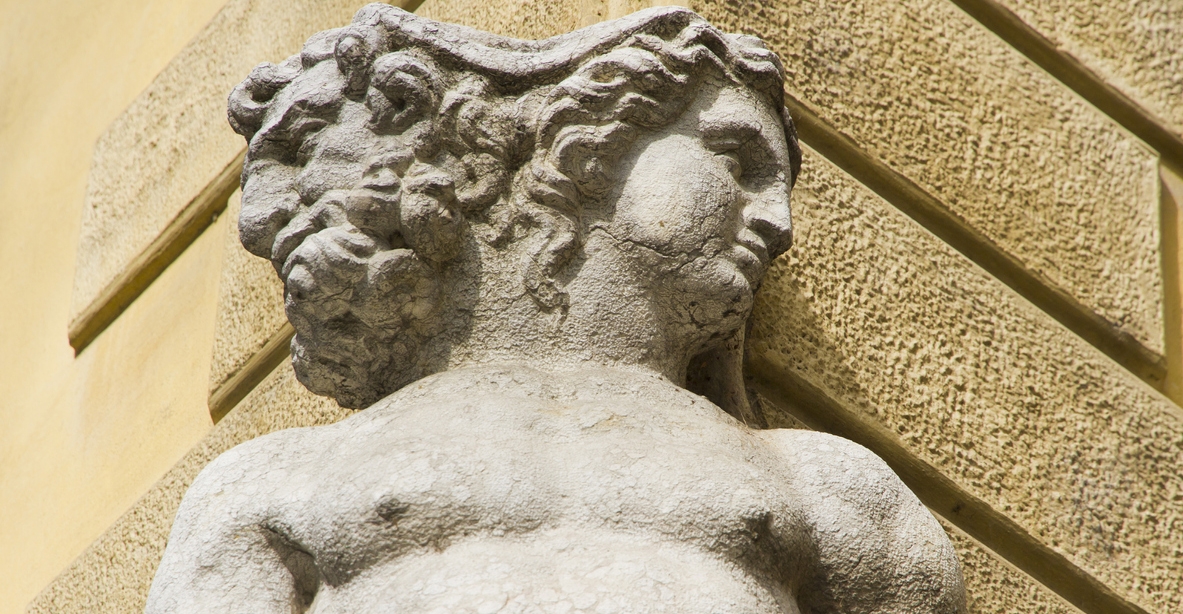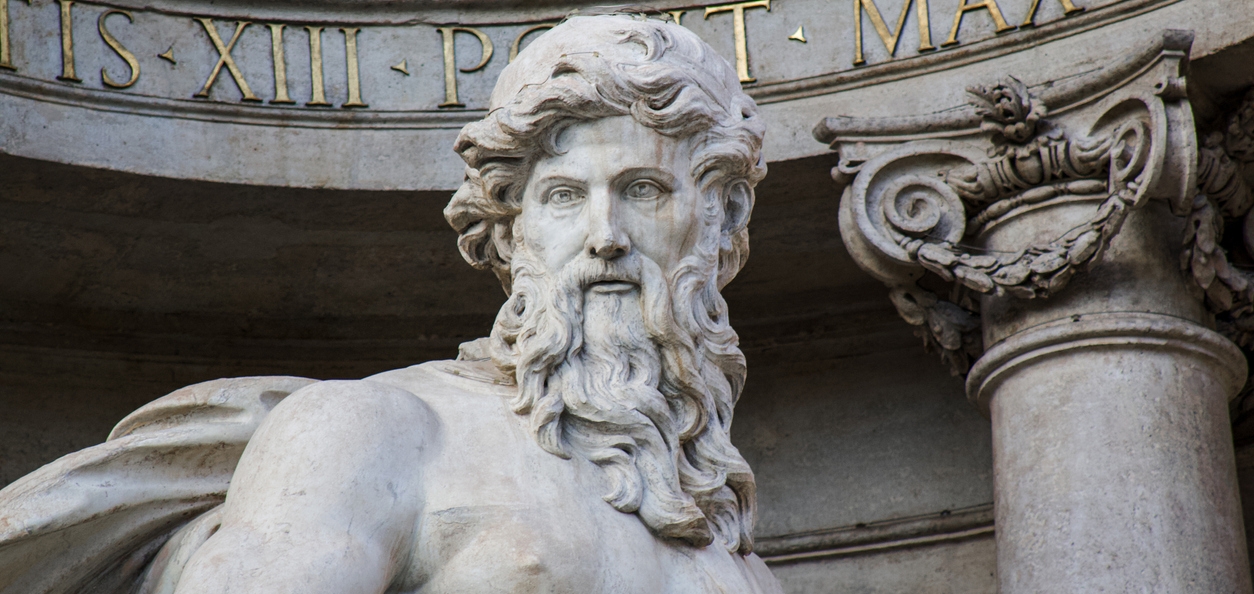Background
Like the ancient Greeks, the ancient Romans also had rich mythology, which defined the rich history of the Roman people as they grew into an empire. But before one can delve into a study of mythology, one first needs to understand the concept behind a myth. These myths appear as simple stories that are filled with valiant heroes, maidens in distress, and powerful gods, but they are much more than just stories. [1]
The gods of the Romans were anthropomorphic, exhibiting many human qualities, including love, hate, and jealousy. Rome’s people were able to identify with these stories and understand their place in the universe as well as their relationship with the gods as a result. If you are looking to know more about Roman mythology, one of the best things to learn about is the ancient Roman gods.
Roman mythology features a variety of gods and goddesses. Due to the early influence of Greece on the Italian peninsula and the ever-present contact with Greek culture, the Roman gods adopted not just their stories but as well as many of their gods, and they renamed a number of them. In fact, before their association with the Greeks, the majority of the Roman gods were more closely associated with cults instead of myths. But much of these changed when the Romans turned from farming to war. [1]
If you are curious about who the gods in ancient Rome were, you’re in the right place. In this post, we are giving you more information about the stories behind the ancient Roman gods and goddesses.
Who Were the Major Gods of Ancient Rome?
Gods and goddesses in ancient Rome fulfilled various functions corresponding to different aspects of life. There are many gods in Latium, the region in Italy where Rome was founded, and some of which were Italic, Etruscan, and Sabine. Based on the belief of ancient Romans, immortal gods ruled heaven, Earth, and the underworld. However, as Roman territory increased, its pantheon developed to accommodate the pagans’ gods, goddesses, and religions, as long as they harmonized with Roman culture. [2]
For instance, the Romans adopted many Greek myths as a result of their exposure to Hellenic culture through the Greek presence in Italy and later Roman conquest of the city-states of Macedonia and Greece. The Romans also united Greek deities with their own corresponding gods.
The Roman pagan gods and goddesses were categorized in different ways. The “Di Consentes” was made up of the 12 principal Roman gods and goddesses at the center of the Roman Pantheon, while the “Di Selecti” was thought to be the 20 principal gods. Even though they were taken from the Greeks, the 12 Roman gods and goddesses have pre-Hellenic origins, possibly in the religions of people from the Lycian and Hittite regions of Anatolia. [2]
The three main Roman gods and goddesses are called the Capitoline Triad, and they include Jupiter, Juno, and Minerva. It replaced the Archaic Triad of Jupiter, Mars, and Quirinus, an earlier Roman god who originated in Sabine mythology. The six male and six female deities occasionally appeared in pairs, like Jupiter and Juno, Neptune and Minerva, Mars and Venus, Apollo and Diana, Vulcan and Vesta, and Mercury and Ceres. [2] Take a look at the list below to learn more about each of the 12 major gods of ancient Rome.
1. Jupiter – God of Thunder and Lightning / King of the Gods
In ancient Greece, Jupiter is the equivalent of Zeus, the father of the gods and the god of the sky and thunder. In Latin, he is known as Luppiter, which means “sky father.” [4] He was the supreme deity of the ancient Romans and was sovereign over all other gods and men. [3]
How Jupiter Came Into Being
Jupiter’s father, Saturn, who had been forewarned that one of his offspring would overthrow him, nearly devoured him, but Jupiter escaped. Jupiter returned as an adult to take revenge, forcing his father to regurgitate his older siblings. Along with his brothers and sisters, they defeated Saturn and the Titans and imprisoned them in Tartarus.[3]
Jupiter’s Portrayal and Symbolism
The ancient Roman people believed that Jupiter made them “superior” as they had honored him more than any other civilization. For them, he was also the personification of the sense of the divinity of Rome. Jupiter was famous for wielding thunderbolts as a weapon and for being the national god of Rome until Christianity was introduced. [4] A lightning bolt was his main weapon, which he would throw down to earth. He was also associated with rain and thunderstorms. [3]
2. Minerva – Goddess of Wisdom, War, and Artisans
The Greek name of Minerva is Athena. She is the goddess of wisdom above all, as well as the goddess of arts, justice, warfare, trade, victory, and law. [4] In addition to sharing a part of the great temple on the Capitoline, Minerva also had a temple on the Campus Martius, which was the Temple of Minerva Chalcidica. [3]
How Minerva Came Into Being
The origin story of Minerva in myth was pretty crazy. Her father, Jupiter, gave birth to her by ejecting her from his brain. [3] It was the same as her origin story in Greek mythology, wherein Athena was born from the head of Zeus, already fully grown as an adult, fully clothed, and covered in armor, as if ready for battle. [4]
Minerva’s Portrayal and Symbolism
Minerva is often depicted by an owl, which signifies knowledge and wisdom. [4] Her sacred bird, which belonged to the goddess of wisdom, came to represent sagacity and understanding. Over the years, literature and art have continued to feature the wise owl symbol, which is still prevalent today. [4] But there are also times when she appears in art with an olive tree and a snake. [3]
3. Juno – Goddess of Marriage and Children / Queen of the Gods
The equivalent of Juno in Greek mythology is Hera. [3] She was the wife of Jupiter and mother to Mars. She was also a major patron god of the city of Rome and the Romans. Even though her major role was the goddess of marriage, she also features as a goddess of eternal youth, vitality, fertility, and a protector of the community. [4]
How Juno Came Into Being
Juno was among the five children eaten by Saturn. Jupiter was able to escape being eaten as he was replaced by a rock. When Saturn ate the rock, he came down with a case of indigestion, which caused him to vomit up his children, which were Juno, Pluto, Neptune, Ceres, and Vesta.
Juno’s Portrayal and Symbolism
Juno is often depicted armed and cloaked in goatskin, which is somewhat similar to Minerva. [4] Her other symbols are the peacock, the cuckoo, and the cow, as these are the animals she considers sacred. There are also times when others depicted her with a crown that featured lilies and roses, carrying a scepter, and riding a golden chariot pulled by peacocks.
4. Apollo – God of the Sun, Music, and Healing
In the Roman pantheon, Apollo was one of the most important gods as he covered a lot of bases, such as truth, prophecy, music, dance, healing, disease, poetry, and archery. Most importantly, Apollo was the god of the sun and light. [4] The Greeks introduced Apollo into Italy, and he was the only god common to Greece and Rome. His primary responsibility each day was to raise the Sun. [3]
How Apollo Came Into Being
Traditionally, Apollo and his twin Diana were born on the isle of Delos. Their parents, in Greek mythology, were Zeus and Leto. But in Roman mythology, Apollo was brother to Mercury and Diana, and his parents were Jupiter and Latona, who was a mistress of Jupiter. [3]
Apollo’s Portrayal and Symbolism
Apollo was a god who looked after a lot of aspects of life. These include music, poetry, archery, light, and prophecy. In art and myth, he has always been portrayed as handsome, athletic, and youthful. [3] Apollo was both beneficial and wrathful. Apparently, he was born clutching a golden sword. It was also believed that he was a master of the lyre, which was an ancient kind of harp. [4] Some of the other symbols for Apollo were a laurel wreath, python, bow and arrows, and a chariot drawn by swans.
5. Diana – Goddess of the Hunt and the Moon
Diana’s Greek equivalent is Artemis. However, Diana was a Roman goddess with her own Italian antiquity separate from the Greek goddess Artemis. The temple of Diana is located on Aventine Hill and was possibly built in the 6th century BC. If Apollo’s job was to bring out the Sun, Diana’s job, on the other hand, was to bring out the moon. Depending on how she was feeling, she would either bring out the full, half, or crescent moon each night. [3]
How Diana Came Into Being
Diana was also the daughter of Jupiter and Latona, and she was Apollo’s twin. It was believed that she helped in the birth of Apollo, which also earned her the title of a goddess of fertility and a protective goddess of women in childbirth. [3]
Diana’s Portrayal and Symbolism
The symbols of Diana are the bow and quiver, deer, hunting dogs, and crescent moon. She was often portrayed as a young woman wearing a short tunic. There is also a lot of art wherein she carries a quiver of arrows to represent her prowess as a hunter. She is also often depicted alongside deer and other woodland creatures.
6. Ceres – Goddess of Agriculture, Fertility, and Motherhood
Ceres is the Roman pantheon’s corn goddess. That was why all Romans strived to keep her happy. Whenever there were failed crops, it meant that someone had made Ceres unhappy, and keeping her on the side would ensure a healthy harvest. [3] The fall and winter correspond to the six saddest months for Ceres, as this was the time when her daughter, Proserpina, was forced to live in the underworld with Pluto, guilty of having eaten a pomegranate, which was known to be the fruit of the underworld. But spring and summer were the happy seasons for her, as it was the time when her daughter came back, thus allowing all crops to grow. [4]
How Ceres Came Into Being
Ceres was one of the five children of Ops and Saturn, and she was also one of the first five children eaten by Saturn after she was born. Ceres and her siblings were saved by Ops when she tricked Saturn into swallowing a rock. When Saturn was unable to digest the rock, he vomited the newborn Ceres and her siblings. [5]
Ceres’ Portrayal and Symbolism
Compared to the aesthetic of other goddesses of the Roman period of history, the appearance of Ceres is more complicated. She was a young woman who was more homely than beautiful in appearance in most artistic portrayals. Her stories are reflected in the objects that she carries, such as a staff and a lantern. There are also images and stories where she holds pieces of farming equipment. She usually travels in a chariot pulled by snakes. [5]
7. Vesta – Goddess of the Hearth and Household
According to legend, worship of Vesta was thought to have started anciently in Lavinium, which was the Italian city founded by Trojan hero Aeneas. [3] The final sister of Jupiter, Juno, Neptune, and Pluto was named Vesta. The cult of the vestal virgins, who joined the continuously burning flame protecting the city of Rome, was entirely dedicated to Vesta. According to legend, Vesta predicted that if the flame were to go out, she would become extremely angry and leave Rome defenseless. [4]
How Vesta Came Into Being
Similar to the story of Ceres, Vesta was also among the children swallowed by Saturn and later on saved by Ops.
Vesta’s Portrayal and Symbolism
Vesta was rarely depicted in human form and was usually represented by the fire of her temple in the Forum Romanum. But she is sometimes portrayed as a beautiful young woman who wears robes and often covers her head. Her symbol is the hearth or sacred fire.
8. Vulcan – God of Fire and Smithing
From early Roman history, Vulcan was associated with volcanic fire, and he had a shrine near Mount Vesuvius. It was from Volcanus, the Latin name for the god, where the modern word “volcano” came from. The temple of Vulcan, which according to legend, was built by Romulus, was found on Campus Martius in Rome. The Greek equivalent of Vulcan is Hephaestus. [3]
How Vulcan Came Into Being
In mythology, Vulcan was Venus’s husband and the son of Juno and Jupiter. Diana, Mars, Apollo, and Minerva were his siblings. According to legend, either his mother or father threw him from heaven because they didn’t like the way he looked. It was believed that he broke his leg when he landed on Earth. [3]
Vulcan’s Portrayal and Symbolism
Vulcan was the god of craftsmen, the forge, and smithing. He is often portrayed with a blacksmith’s hammer. Connected with all sorts of work, he was mostly depicted as having a ruddy complexion. Some of his sacred animals include the dog and the donkey. Based on myths, Vulcan was said to hammer away in his fiery forge beneath Mount Etna, making weapons for the gods. The activity from the volcano was a sign for the Romans that Vulcan was busy in his workshop. [3]
9. Mars – God of War
The Greek equivalent of Mars is Ares, but he was a separate deity from Ares. Originally, Mars was a god of agriculture and vegetation. Mars, however, came to be regarded by the inhabitants of the Italian peninsula as a warrior god who guarded Roman farms and kept an eye on the sons of the farmers when they went off to battle. [3]
How Mars Came Into Being
Romulus and Remus, the fabled founding fathers of Rome, were born to Mars, the son of Jupiter and Juno. [3] Based on legend, Juno, the queen of the gods, gave birth to Mars after being touched by a magic plant.
Mars’ Portrayal and Symbolism
In mythology, Venus was the only god with whom Mars had a romantic relationship; the other gods all despised Mars. Mars was tall and handsome, but he was also wicked and arrogant. He loved battles, and he represented the bloody violence of war. [3] Some of the symbols of Mars include the spear, sword, and shield.
10. Mercury – God of Merchants and Traders
In Greek mythology, the equivalent of Mercury is Hermes. But he eventually became a Roman god in his own right. The temple of Mercury was located on Aventine Hill in Rome. He was one of the lesser gods of the twelve, and with no dedicated priests, he was nonetheless popular. He was the god of many things, such as finance, trade, travelers, communication, luck, and trickery. [3]
How Mercury Came Into Being
Mercury was the son of Jupiter and Maia, the goddess of the plains. Based on Greek legends, he was born in a cave on Mount Cyllene in Arcadia after Zeus joined in love with the beautiful nymph Maia.
Mercury’s Portrayal and Symbolism
Mercury is usually depicted holding the caduceus, which is a golden staff with serpents wrapped around it. He has winged sandals that made him the fastest flier of all the gods. He was loyal, wise, and witty, and he was known as a peacemaker among the other gods. Mercury was also a problem solver for Jupiter. Mercury was respected and liked by everyone, even his brother Mars. [3] He also had a winged hat to top things off. The liquid metal Mercury was named after him due to his slipperiness and speed. [4]
11. Venus – Goddess of Love and Beauty
Venus was among the most respected of all the goods of ancient Rome. She was also a symbol of Roman greatness. In fact, even Julius Caesar claimed to be descended from Venus. To the Romans, the role of Venus was that of the great mother, Venus Genetrix. Aeneas was her son, who was an ancestor of the legendary Romulus and Remus. [3] Venus was also the goddess of everything that comes with love, such as fertility, sexuality, and desire. Aphrodite is her Greek counterpart. [4]
How Venus Came Into Being
Based on mythology, Venus was conceived when the Titan Cronus castrated his father, the god Uranus, whose severed genitals fertilized the sea. The birth of Venus depicts the moment when, having emerged from the sea in a shell, she lands at Paphos in Cyprus. She was cared for by two winds, who blew her toward the shore. A nymph was then poised to wrap a cloak decorated with spring flowers around her to cover her nudity. [6]
Venus’ Portrayal and Symbolism
Venus was often depicted nude due to her natural beauty and sexual nature. Most of her sculptures resembled a close similarity to the Aphrodite of Cnidus and the Venus de Milo. But there are also many paintings that depict Venus in various forms. Some of the symbols connected to Venus include the rose and common myrtle.
12. Neptune – God of the Sea / Lord of the Sea
Neptune is equivalent to Poseidon in Greek mythology. He is the god of both the sea and freshwater. He was the brother of Pluto and Jupiter, and the three of them rule the heavens, the earthly world, and the underworld. The Romans also see Neptune as the god of horses and the patron of horse racing. But for the most part, Neptune was in charge of all the rivers, springs, lakes, and seas in the world. [4]
How Neptune Came Into Being
The brother of Jupiter and Pluto was Neptune. Vesta, Ceres, and Juno were also his siblings. He was a son of Ops and Saturn and was among the five children who were swallowed by Saturn and later on saved by Ops.
Neptune’s Portrayal and Symbolism
Neptune’s image as a bearded, hulking figure on a chariot pulled by sea horses and had a trident in hand has endured even at the present time. Comparable to the sea, Neptune had boundless energy and a volatile temper. He is depicted with long green hair and glistening blue eyes. [3] Since he was also the god of horses and the patron god of horse racing, he is often portrayed with horses. [4]
The Major Gods of Ancient Rome |
||
| Roman God | Title | Power |
| Jupiter | God of Thunder and Lightning / King of the Gods | Had the ability to hold and throw lightning bolts. |
| Minerva | Goddess of Wisdom, War, and Artisans | A powerful goddess that held control over battle strategy, poetry, medicine, wisdom, commerce, crafts, and weaving. |
| Juno | Goddess of Marriage and Children / Queen of the Gods | Had the power to protect the Roman people, bless marriages, and purification. |
| Apollo | God of the Sun, Music, and Healing | Had the ability to see into the future, heal people, and bring illness and disease. Also great in using the bow and arrow in battles. |
| Diana | Goddess of the Hunt and the Moon | Had the power to talk to woodland animals and control their movements and behavior. Also a skilled hunter and protector of virgins. |
| Ceres | Goddess of Agriculture, Fertility, and Motherhood | Had the power to fertilize, multiply, and fructify plant seeds. |
| Vesta | Goddess of the Hearth and Household | Had many powers, including flight, invulerability, immunity to heat, godlike strength and stamina, and fire creation and control. |
| Vulcan | God of Fire and Smithing | A skilled craftsman and a mythical inventor of smithing and metal working. Had the power to generate and manipulate fire. |
| Mars | God of War | Loved violence and conflict and represented military power and the noise and blood of battle. |
| Mercury | God of Merchants and Traders | Had incredible speed and could fly as fast as a birth. |
| Venus | Goddess of Love and Beauty | Had the powers of shapeshifting, divine beauty, transfiguring humans, and changing the course of a battle. |
| Neptune | God of the Sea / Lord of the Sea | Had the power to control winds and storms. |
Other Ancient Roman Gods
In addition to the 12 major gods of ancient Rome, there are other ancient Roman gods that you need to learn about. Here are some of them:
Bacchus – God of Wine
The Greek equivalent of Bacchus is Dionysus. He was the god of wine, as well as fertility, festivity, and, strangely, insanity. Essentially, when it came to Bacchus, it seemed to be all about partying. In fact, the Romans called him Liber, which means “freedom.” He was regarded as the patron deity of the plebeians, or common people, in the Roman Empire because he had no connection to warfare. [4] Bacchus was also the youngest of the major gods in Rome and the only one born to a mortal. This was the reason why he was often not included in the 12 major gods of Rome.
Somnus – God of Sleep
Somnus was not a major god in ancient Rome, but he was still essential. In Latin, his name means “sleep.” He lives in the Underworld, and Virgil, an epic Roman poet, described him as the brother of Mors, which was the god of death.[4]
Voluptas – Goddess of Sensual Pleasure
Voluptas was born when Cupid met Psyche, based on a story from Ovid’s Metamorphoses. Her Latin name actually means “bliss” or “pleasure.” The Greek counterpart of Voluptas is Hedone, from where hedonism was derived. Not much was known about Voluptas. However, three Roman authors—Pliny the Elder, Varro, and Macrobius—make mention of a deity they refer to as “Volupia,” who was venerated at a structure known as the Sacellum Volupiae. [4]
Saturn – God of Sowing
Saturn is quite literally the grandfather of the gods. Jupiter, Neptune, Pluto, Ceres, Vesta, and Juno were all fathered by him. He was also known for having eaten five of his children. He was the god of wealth, agriculture, liberation, and generation. There was also a temple dedicated to Saturn, which was located at the west end of the Roman Forum, and it can still be seen to this day. Saturn was believed to have ruled over the land that later became Rome. There is also a festival called Saturnalia, which is held in late December and is among the most famous Roman festivals. [4]
Janus – God of All Beginnings
A significant deity in the Roman pantheon is Janus. He was also an old god alongside Saturn. He was also the god of some pretty large philosophical elements, such as time, duality, beginnings, and endings, as well as gates and doorways. Janus was mostly depicted with two faces, one facing the past and one facing the future. The month of January is believed to be named after him as a sign of the start of a new year. The Romans also claim Janus as their unique god, as the ancient Greeks never had an equivalent to him. [4]
More Interesting Facts About the Roman Gods and Goddesses
Just like the gods and goddesses of ancient Greece, ancient Roman gods also have interesting stories, and they all symbolize an essential part of human lives. If you want to learn more about them, below are some interesting facts about the Roman gods and goddesses:
- Being deeply religious, the Ancient Romans thought that their success was a result of their firm faith in the Gods and what the Gods would do for them in return.
- Jupiter could launch thunderbolts from the sky while holding them in his hands.
- In comparison to his father, Jupiter, Mars was the most powerful and terrifying of the Gods.
- The bundle of grain that Ceres was always shown carrying about symbolized the harvest and agriculture.
- Mercury served as the gods’ messenger. Wherever a deity could send him, he could travel rapidly, thanks to the wings on his helmet and sandals. He could be relied upon to convey communications because of his dependability.
- The flame in Vesta’s temple symbolized the “hearth of Rome,” as she was the goddess of the hearth and the home.
- Saturn was the father of Jupiter. Jupiter and his two brothers, Neptune and Pluto, split the world equally among themselves to reign after Saturn passed away. They were all content with their selections: Jupiter chose the skies, Neptune the sea, and Pluto the underworld.
- Although Juno, Jupiter’s wife, had authority over all Roman women, she paid particular attention to those who were married.
- It is supposed that Mars was a tall, attractive man who was also terribly cruel. He didn’t seem to care who won or lost a war because all he wanted to witness was fighting and bloodshed.
- Minerva was motherless because she was created from Jupiter’s brain.
- The emperors of Rome were elevated to godlike status after their deaths, which gave their rulers additional authority.
- Bad emperors like Nero and Tiberius were not granted divine status.
- Christians were frequently murdered by Romans because they had multiple gods, whereas Christians only had one.
- The five most important gods were named after the planets that were discovered by the naked eye, including Mercury, Venus, Mars, Jupiter, and Saturn.
- Following the development of the telescope, further planets were found, and the names of gods like Uranus, Neptune, and Pluto were utilized.
Conclusion
It is fascinating to learn that the ancient Romans were a polytheistic nation that honored numerous Roman gods and goddesses before Rome became the center of Christianity. They thought that these gods had assisted them in building their country and that they continued to affect them daily. Success in ancient Rome was connected with having a positive relationship with the Roman gods and goddesses, as it is in many other paganisms. They thought that upholding this required both mystical prayer and practical sacrifices in return for gain. We hope this post helped you learn more about the ancient Roman gods and goddesses.
References
[1] Wasson, D. L. (2022, September 16). Roman Mythology. World History Encyclopedia. Retrieved September 16, 2022, from https://www.worldhistory.org/Roman_Mythology/
[2] Land, G. (2021, September 1). The 12 gods and goddesses of pagan Rome. History Hit. Retrieved September 16, 2022, from https://www.historyhit.com/the-gods-and-goddesses-of-pagan-rome/
[3] James, B. (n.d.). Who were the major Roman gods and goddesses? Sky HISTORY TV channel. Retrieved September 16, 2022, from https://www.history.co.uk/articles/who-were-the-major-roman-gods-and-goddesses
[4] Claudia. (2022, May 31). Who were the main Roman gods and goddesses? Strictly Rome. Retrieved September 16, 2022, from https://strictlyrome.com/roman-gods-and-goddesses/
[5] Gods and Goddesses, E. (2021, October 27). Ceres • Facts & Mythology about the Roman goddess of Agriculture. Gods & Goddesses. Retrieved September 16, 2022, from https://www.gods-and-goddesses.com/roman/ceres/
[6] Cooch, M. (2022, April 11). Birth of Venus. Encyclopædia Britannica. Retrieved September 16, 2022, from https://www.britannica.com/topic/Birth-of-Venus
[7] KidsKonnect, E. (2022, January 31). Roman gods facts, Activities & Information for Kids. KidsKonnect. Retrieved September 19, 2022, from https://kidskonnect.com/people/roman-gods/



